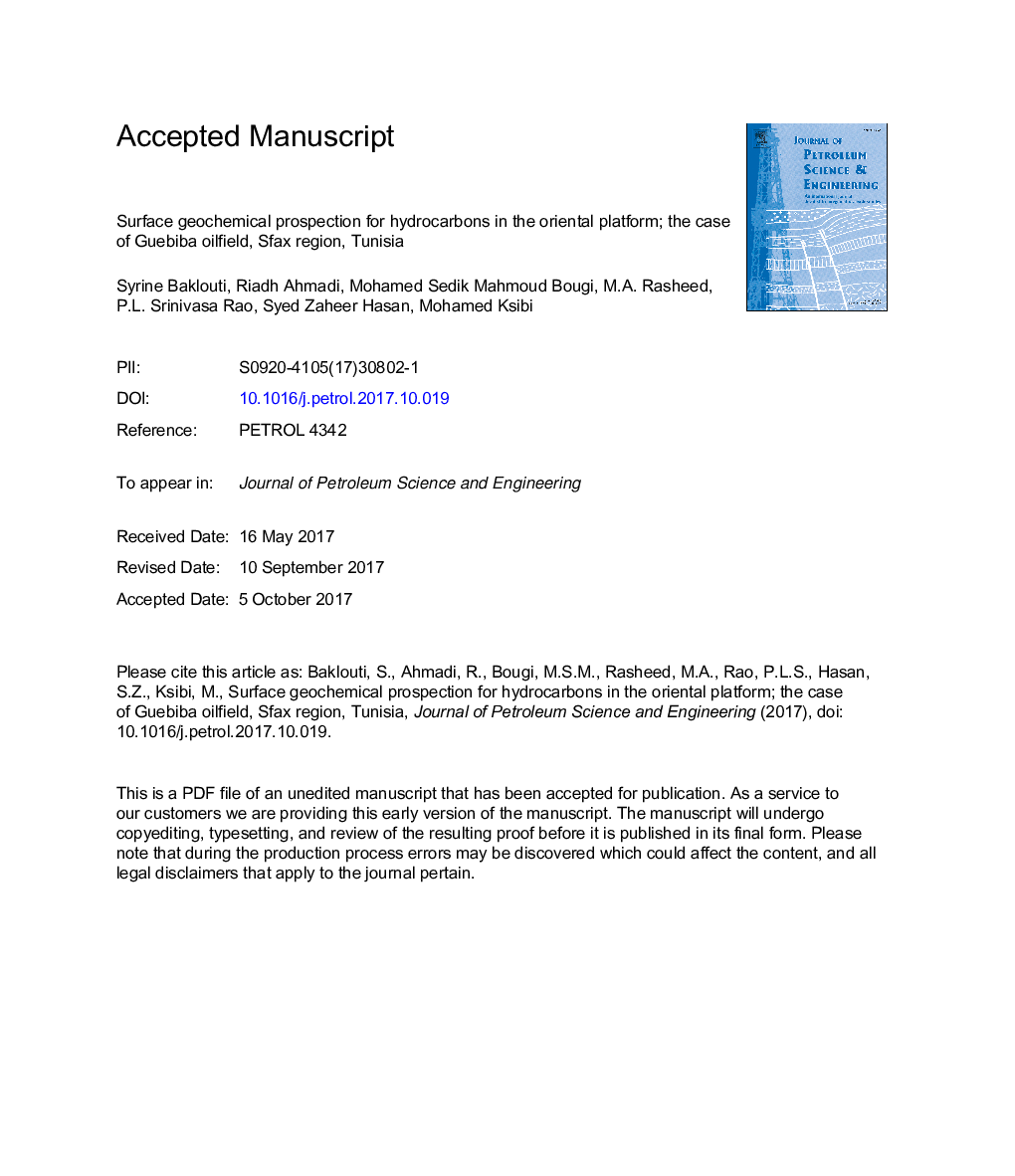| Article ID | Journal | Published Year | Pages | File Type |
|---|---|---|---|---|
| 5483911 | Journal of Petroleum Science and Engineering | 2017 | 38 Pages |
Abstract
Oil and gas exploration were commonly carried out by conventional methods such as geophysical seismic reflection. However, such techniques are costly especially when new discoveries are becoming smaller in surfaces and reserves. The aim of this study consists to improve hydrocarbon exploration techniques by using alternative low cost method based on surface geochemical prospection. We applied an integrated approach using free and adsorbed soil gases to detect potential areas of hydrocarbon micro-seepage. We validated this technique over an already producing oilfield in Sfax region, south-eastern Tunisia. The objective is to assess the use of geochemical indicators as a tool for rapid evaluation of hydrocarbon prospects. A total of 43 free gas samples and 51 soil samples were collected in a grid pattern of 1Â ÃÂ 1Â km. Free gas analyses showed concentrations ranging from zero to 30Â ppm of hydrocarbon gases. Gas chromatographic analyses of hydrocarbons desorbed gases showed values ranging from zero to 134Â ppm. The presence of all hydrocarbon gas components and their relative ratios proves the thermogenic origin of these gases. The interpretation of gas concentration maps demonstrates the presence of active hydrocarbons micro-seepage from petroleum systems. Comparison to geophysical and geological data proved the role of major faults in providing pathways to gas migration to surface. In conclusion, our study confirms that the use of both free gas and adsorbed gas analyses of soil samples is a low cost tool for hydrocarbon exploration. This method allows pointing up hydrocarbon shows zone from large explored surfaces. Then, subsequent seismic and geological investigations can be conducted on smaller areas highlighted by the gas concentration anomalies.
Related Topics
Physical Sciences and Engineering
Earth and Planetary Sciences
Economic Geology
Authors
Syrine Baklouti, Riadh Ahmadi, Mohamed Sedik Mahmoud Bougi, M.A. Rasheed, P.L. Srinivasa Rao, Syed Zaheer Hasan, Mohamed Ksibi,
